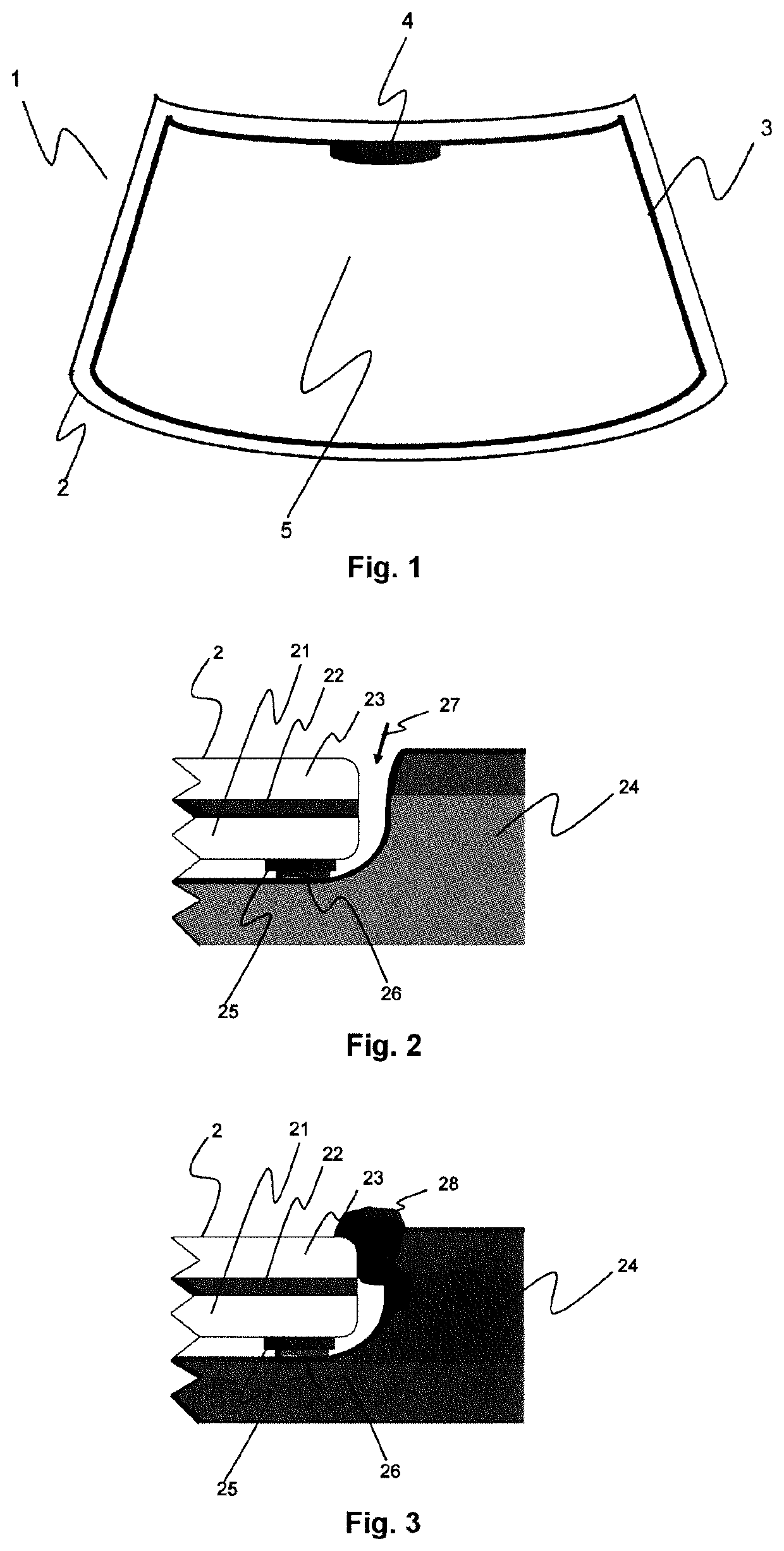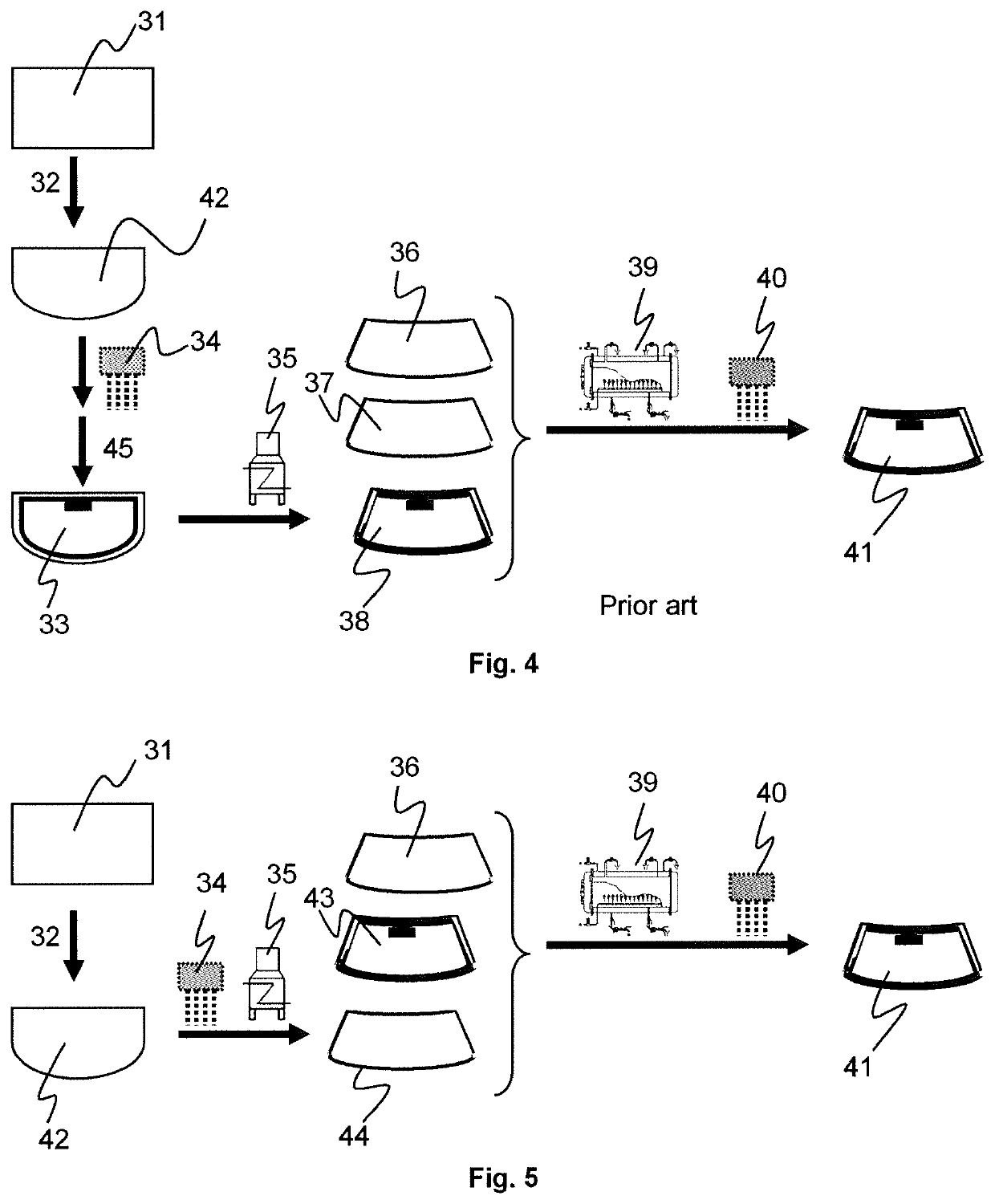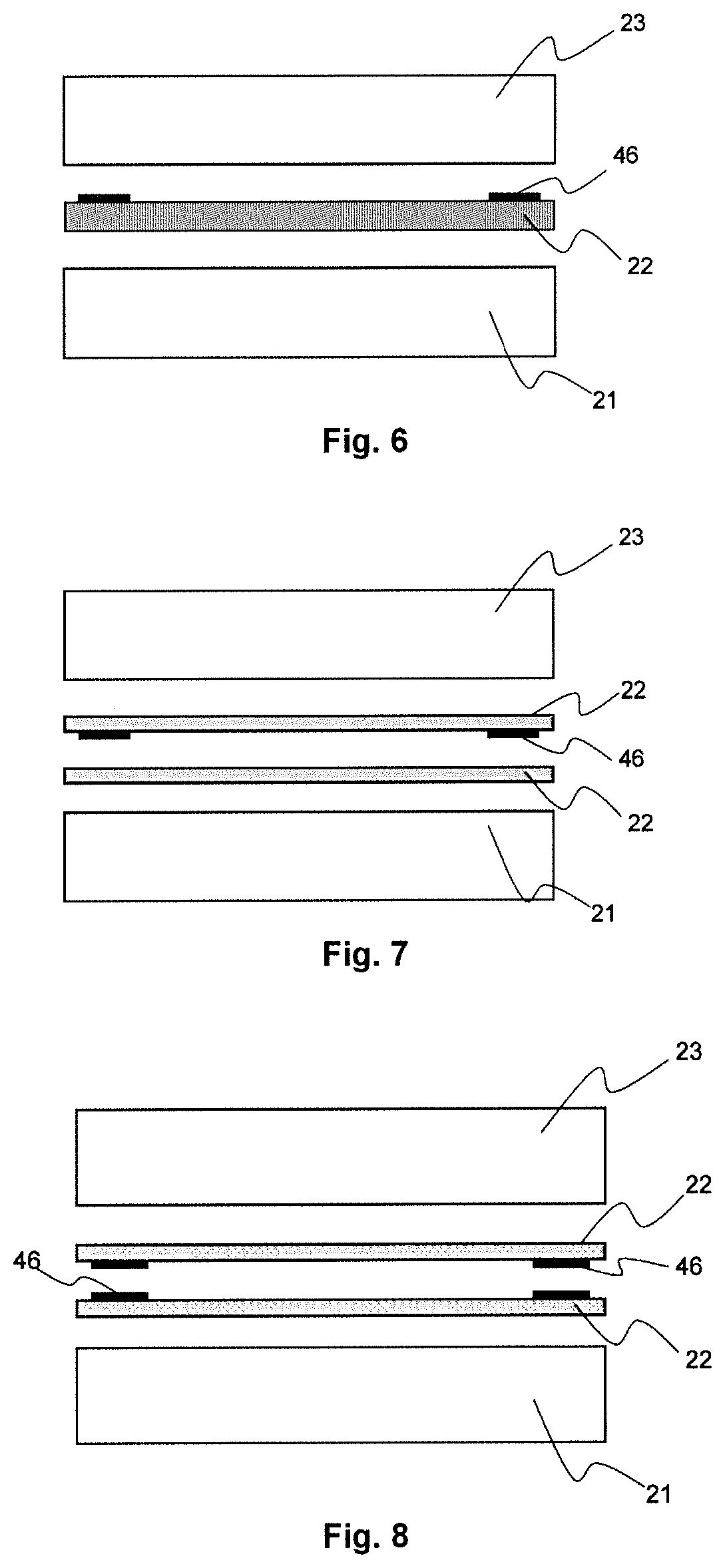Laminated safety glass
a technology of safety glass and laminated glass, applied in the field of laminated safety glass, can solve the problems of limited use by environmental legislation, scratches and abrasion, adhesion problems, etc., and achieve the effect of minimizing production losses
- Summary
- Abstract
- Description
- Claims
- Application Information
AI Technical Summary
Benefits of technology
Problems solved by technology
Method used
Image
Examples
example 1
[0155]This example illustrates the manufacturing of laminated safety glass using a substantially light insensitive thermally reducible composition (ITR).
Preparation of Organic Silver Salt Dispersion DISP-1
[0156]Behenic acid was added to 800 mL of 2-butanone in a 5 L vessel and the dispersion heated with stirring at 350 rpm to 70° C. giving a clear solution. 1.1 L of 0.75M aqueous sodium hydroxide was added slowly until a pH of 9.9 was attained, then after 5 minutes further stirring 1 L of 0.8M aqueous silver nitrate was added at a constant rate of ca. 260 mL / h until a UAg (defined as the potential difference between a silver electrode of 99.99% purity in the aqueous liquid and a reference electrode consisting of a Ag / AgCl-electrode in 3M KCl solution at room temperature connected with the aqueous liquid via a salt bridge consisting of a 10% KNO3 salt solution) of 315 mV was attained, thereby producing a 12% dispersion of organic silver salt. The organic silver salt was then filtered...
example 2
[0170]This example illustrates the manufacturing of laminated safety glass using a light sensitive thermally reducible composition (STR).
Preparation of Thermally Reducible Composition STR-1
[0171]The silver behenate dispersion DISP-1 was used to prepare the thermally reducible composition STR-1 and STR-2 according to Table 5. The addition of the tetraethyl ammonium bromide resulted in a conversion of silver behenate to the light sensitive silver bromide.
[0172]
TABLE 5g of compound:STR-1STR-2silver behenate10.0010.00tetraethyl ammonium0.420.42bromidephtalazine0.63—4-methylphtalic acid0.25—Stabilizer 10.630.63phtalazinone—0.50Lowinox 22BI463.133.13S Lec ™ BL5HPz8.508.50S Lec ™ BX-35Z14.2014.202-butanone88.5088.50
Preparation of Laminated Safety Glass SG-2 and SG-3
[0173]The thermally reducible composition STR-1 and STR-2 were applied on 0.7 mm thick glass sheets (Menzel-Glaser, supplied by Thermo Scientific). The thermally reducible compositions were coated twice using a 200 μm bar with i...
PUM
| Property | Measurement | Unit |
|---|---|---|
| temperatures | aaaaa | aaaaa |
| pressure | aaaaa | aaaaa |
| pressure | aaaaa | aaaaa |
Abstract
Description
Claims
Application Information
 Login to View More
Login to View More - R&D
- Intellectual Property
- Life Sciences
- Materials
- Tech Scout
- Unparalleled Data Quality
- Higher Quality Content
- 60% Fewer Hallucinations
Browse by: Latest US Patents, China's latest patents, Technical Efficacy Thesaurus, Application Domain, Technology Topic, Popular Technical Reports.
© 2025 PatSnap. All rights reserved.Legal|Privacy policy|Modern Slavery Act Transparency Statement|Sitemap|About US| Contact US: help@patsnap.com



